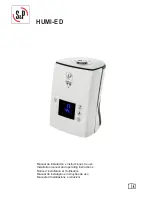
© Corroventa Ltd.
2017.05
8 (17)
Drying methods
The following outlines the basics of different drying methods that can be applied to CTR A and, in
some cases, additional equipment from Corroventa's product range. The descriptions are only an
overview, and in the event of any doubt about how any given situation should be handled please
consult an experienced dehumidification technician.
General drying, room dehumidification
An adsorption dehumidifier like CTR A produces such dry air that an air turnover of between one and
two times per hour are sufficient, compared with condensing driers where turnover should instead
be between three and four times per hour. Approx. 300 m
3
/h is enough for a room with a 50 to 60m
2
area if the roof height is 2.5 metres.
As with all dehumidification, regardless of type or model, it is important to ensure that the area to be
dehumidified is well sealed so that the process is performed as fast and as energy efficiently as
possible. Windows and doors to the area must be closed, and if there are not any, plastic or other
temporary partitions must be used.
If the spread of the damage is limited it is advisable to cover it with plastic and let the dry air flow in
under the plastic via hose. Leave openings at the edges where the air can exit. This makes the
process faster and consumes less energy.
Cover local damage with plastic when drying to increase the drying rate and reduce
energy consumption.
Summary of Contents for A2
Page 1: ...A2 A4 ADSORPTION DEHUMIDIFIERS USER MANUAL ...
Page 2: ......






































